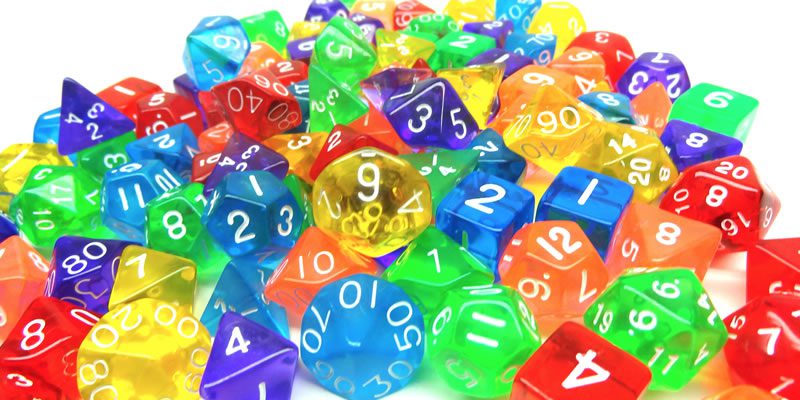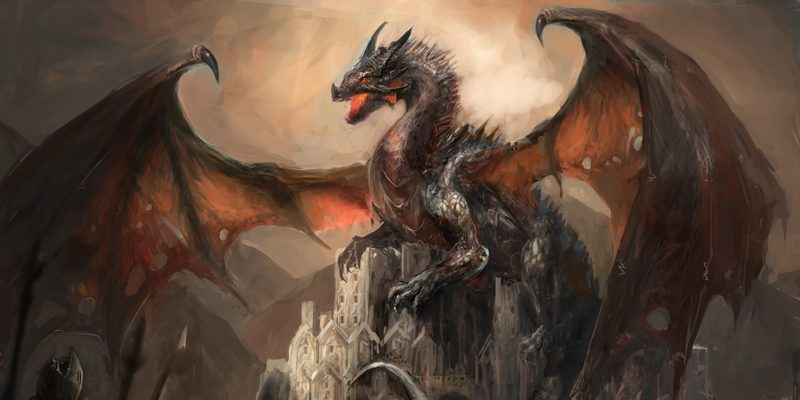Tables of Adventure

We have another guest post by Robert Evans.
I have a confession to make. I LOVE tables. As a GM that’s frequently too lazy to fully prep for what my players might do I learned pretty pretty early how to use tables to save my own hide. In fact it’s now gotten to the point that I do almost no prep for my games and simply work off of a loose story arch, buckets of B.S., and of course tables. The trick I’ve learned is two fold. pick the RIGHT tables and learn how to have what you roll flow smoothly into my games and not appear as random as they actually are.
Back when I was bright a bright eyed naive DM that only had experience with a single system I didn’t think anything about weather a table fit. If I needed loot I rolled on a loot table and that was mostly it. I started as a soft core user with simple treasure tables or as I like to call “gateway charts”. It wasn’t until I fell down the rabbit whole that is one of my favorite systems, Savage Worlds, that really saw the true power of tables. This is when I also learned that you didn’t just have to use dice for a table and could instead use a deck of cards for all kinds of fun twists on probability. This is also the first time I really dug into a setting agnostic system which meant there were options and charts for all different kinds of games and it was the GM’s (see how I grew up and out of the D there?) job to decide what tables work for what game you were playing. Sure if I had a preset setting to go with the system I had most tables already picked for me, but I’ve always been a custom world kind of GM and never stayed true to the world “as written”.
It wasn’t just the different themes the tables were used for either. Probably the single biggest effect on me as a GM in recent years was the Adventure Generator. I’ve read the new D&D 5th Edition and have seen that they have some pretty great generators in their so I’m sure this isn’t as alien of a revelation as it might have been a few years ago, but the first time I saw a system that let me roll a few dice or draw a few cards and then just connect the dots to make a full fleshed out and above all sensical story for my players to run through I was hooked. Like in a back ally looking for my next fix hooked. Granted not all tables are perfect fits and finding the set up that works best for you is crucial, but for me as an improvisational GM there is nothing better than being just as surprised as the players for what the next twist and turn might be.
I would love to say that making an adventure generator has some magic secret, but honestly it doesn’t. The best I can do is give you my favorite two generators and then what I do to make them work. IF you are a fan of fantasy, dungeon crawls, and above all dice I actually do strongly suggest checking out the 5th Edition DMG for D&D. IT has tons of options for generating adventures or all sorts even mysteries and those charts are not based on stats or mechanics so they work for whatever system you happen to be running. If on the other hand you’re looking for something quick, a little dirty, and modern (I refer to the setting not the mechanical style) I would greatly suggest the East Texas University setting for Savage Worlds. Again the actual stories it makes are not tied to any one system so the generator will translate to whatever system you prefer. I will admit that the ETU generator has out comes tied to specific locations within the campaign of that setting but that brings me to the second part of using tables for your games, editing and interpretation.
Re-skinning is really the key to an adventure generator. The real hard part is the figuring of probability and how to make one table flow into the other and once that’s done for you a quick re-skin can turn a set of tables for a dungeon into a spaceship or the adventures of monster hunting college students into into plains hopping were vampires from the 8th dimension. You know, whatever might float your boat. The trick is to take each table and first figure out what it is off if you were to strip all the fluff. Usually this is the title of the table such as villain or location. Then you just go down the list and replace each result with one that suits your setting.
A Bigfoot can become am Owlbear. One world’s Lich is another’s Vampire Lord. The other great thing about this method is if you get tired of a result coming up our feel like it should only ever appear once then you can just update your table and swap it out. I can say that this method doesn’t perfectly jive with systems that require a strict CR system, but the generator still works for your over all story and villain. Then you have a theme to select monsters of an appropriate level for your players. A bonus by the way if you are using D&D 5th is that lower level monsters still pose a threat just use larger numbers.
The last trick for making a set of tables unfold into an adventure is how you connect those rolls or draws together. Some pieces stand on their own such as the villain or the party’s patron, but one thing to then think about is how that patron is connected to the villain. If you are using a table that gives your adventures more than one location to go to think about how those places link together and what importance they might have to the villain. It’s all a big web that connects, but don’t get overwhelmed. Just figure out some broad strokes and if you’re lucky let the players make the connections for you then act like it was your plan all along.
I know this last part is more of an art than a science, but some practice will help a lot.
Finally for those that for some reason or another can’t get a hold of one of the advertiser generators I mentioned o our find any others of your own I’ll whip up the most basic generator ever here.
Villain 1d6
- Lumbering Beast (Yeti, Bigfoot, Bugbear, Swamp Thing)
- Master Thief (Assassin, Career Criminal)
- Former Hero (Former Cop, Former Mentor)
- Powerful Noble or Politician (Mayor, Duke, Lord, Politician)
- Wielder of Dangerous Knowledge (Blackmailer, Wizard, Cultist)
- Former Friend or Lover
Villain’s Motive 1d6
- Greed
- Lust
- Power
- Revenge
- Insanity
- Love
Patron 1d6 (guy hiring you)
- Public Figure (Mayor, Local Tavern Owner, DA)
- Grieving Parent
- Wealthy Noble or Aristocrat (Lord, Duke, Politician)
- Wandering Traveler (Hobo, Minstrel, Mysterious Traveler)
- Old Friend
- Family Member
Location 1, 2, & 3 (Roll 1d10 3 times)
- City Street
- Tavern
- Caves
- Forest
- Temple
- Trade Road
- Public Building
- College or Library
- Swamp or Marsh
- Unusual Location (usually supernatural or magical)
Action Type (Roll 1d4 once for each location)
- Fight
- Chase (Car, Foot, Hacking, Flight)
- Social Conflict (Negotiations, Talking into a location, Interrogation)
- Test of Skills (Picking Locks, Navigating terrain, Exploring wilderness)
Big Climax Location 1d6
- Rooftops
- Lab
- Sewers
- Crypt
- Luxurious Lair
- Patron’s Location
Do some random adventures in your feed time then take your time to make the connections. If you like what you have save it for a rainy day of you don’t then toss our and no one who know. Some other small tips are to read an article or two about how to structure a story (the 3 act method is my go to). Don’t worry too much about holding too true to the dice. If something comes up that you just can’t connect right now then re-roll one or both of those dice. It’s your story and you have final say.
Robert “Bobby” Evans writes for the blog The Gm’s Table.
The photo is from White Tower and you can buy the dice in the photo:
http://whitetowerhobbies.com/white-tower-bulk-translucent-polyhedral-dice



